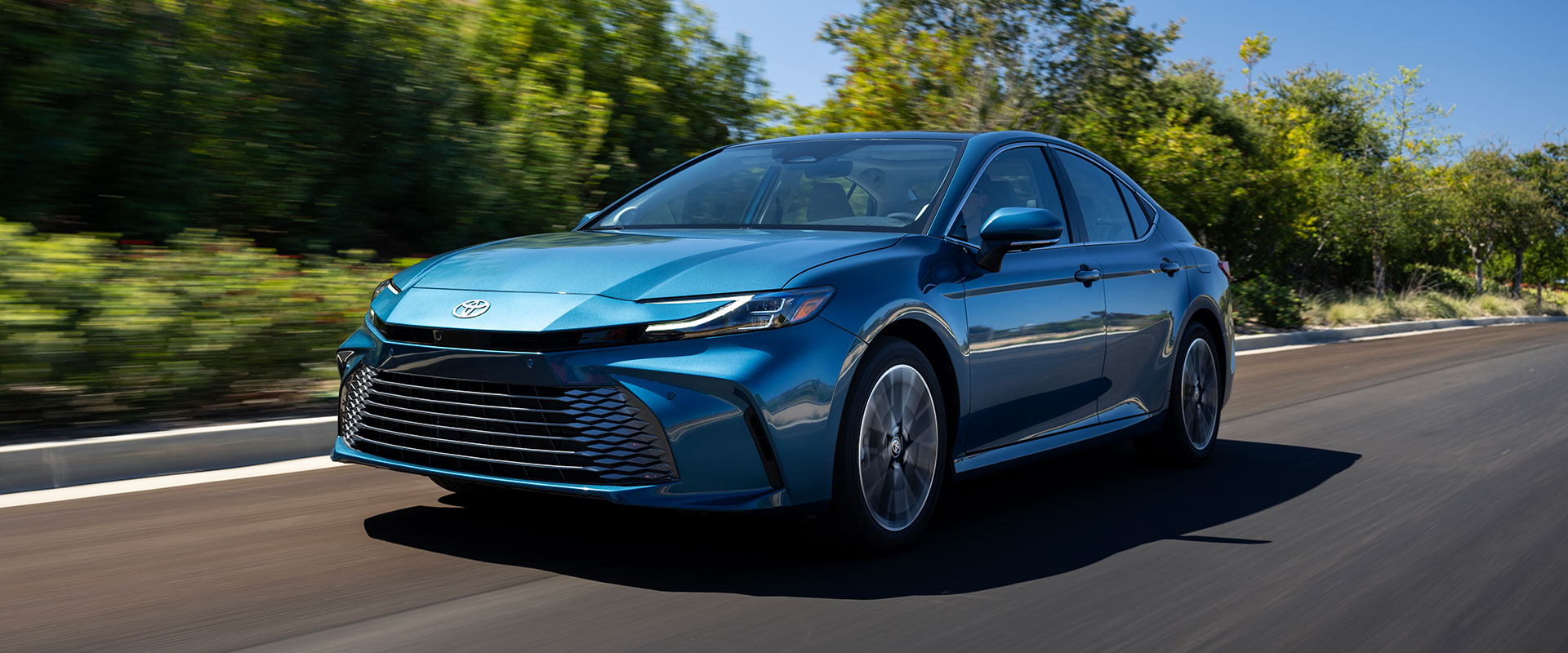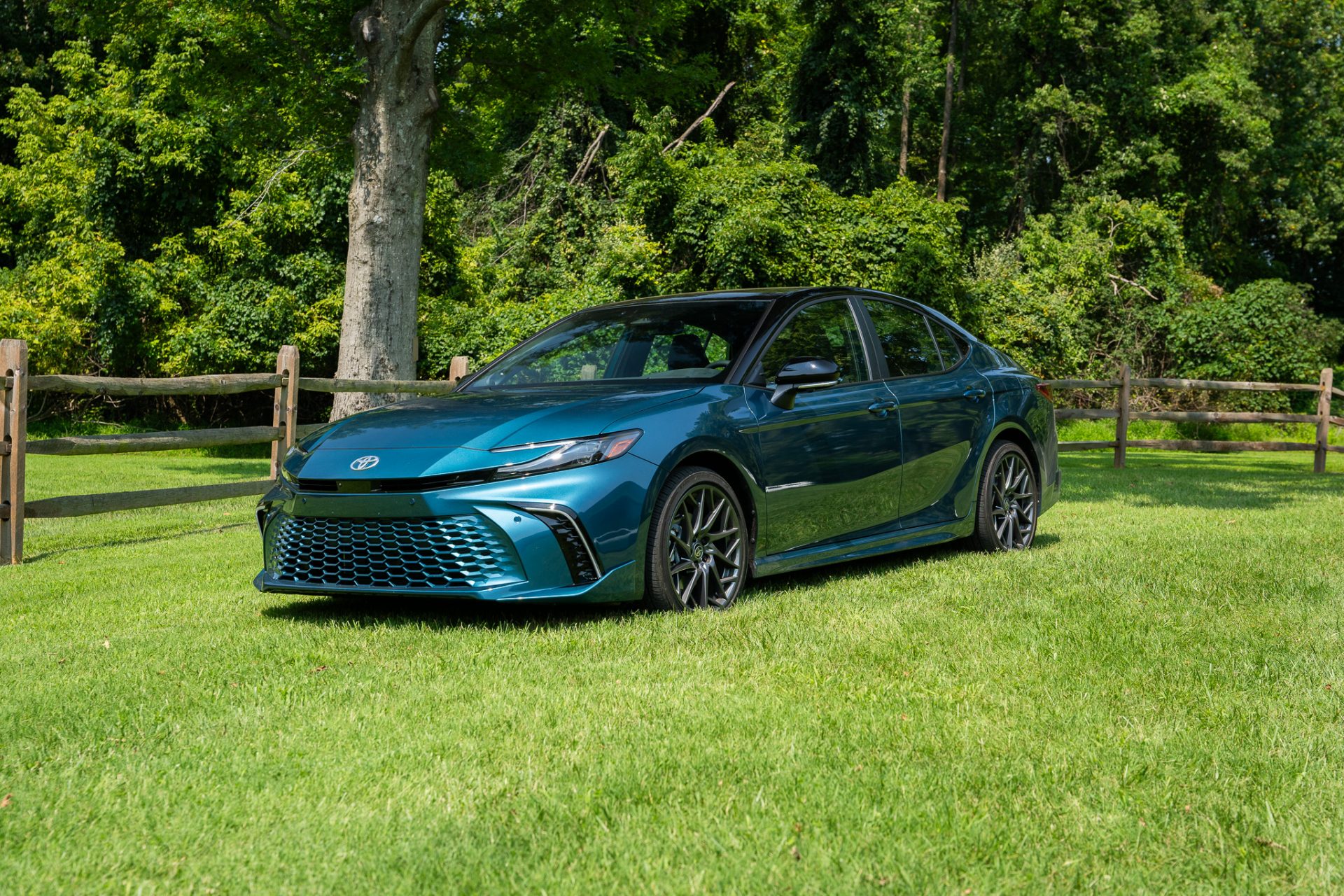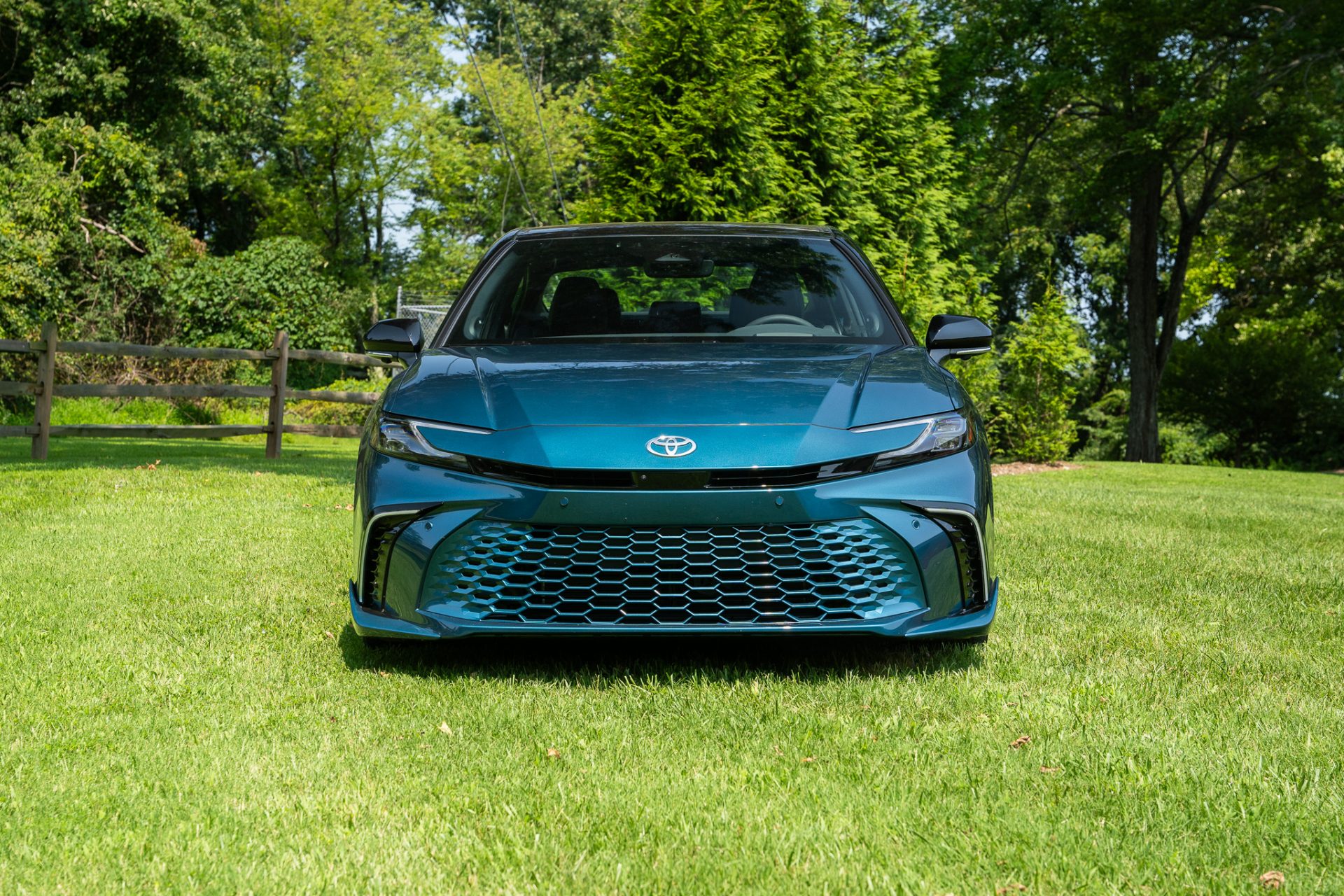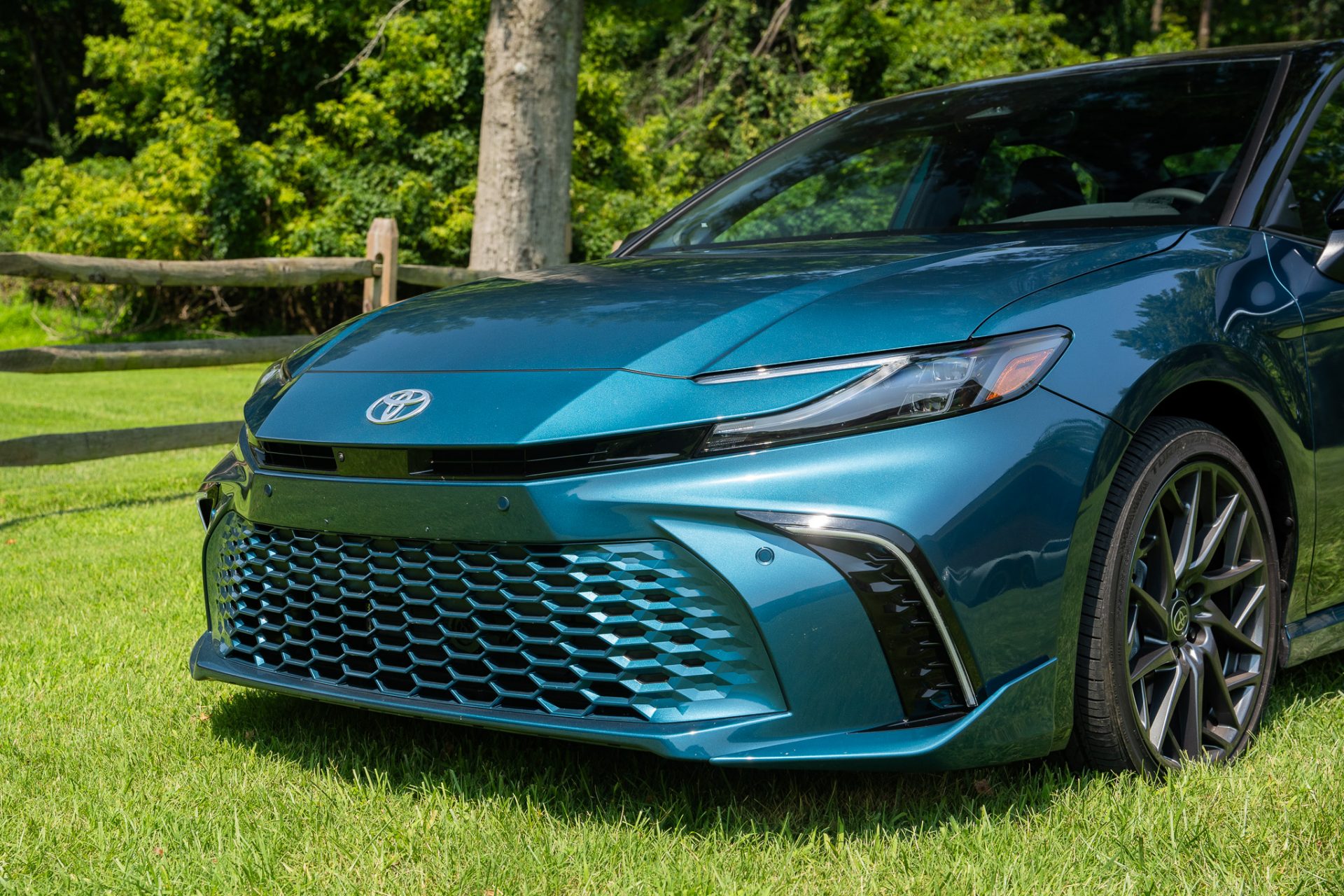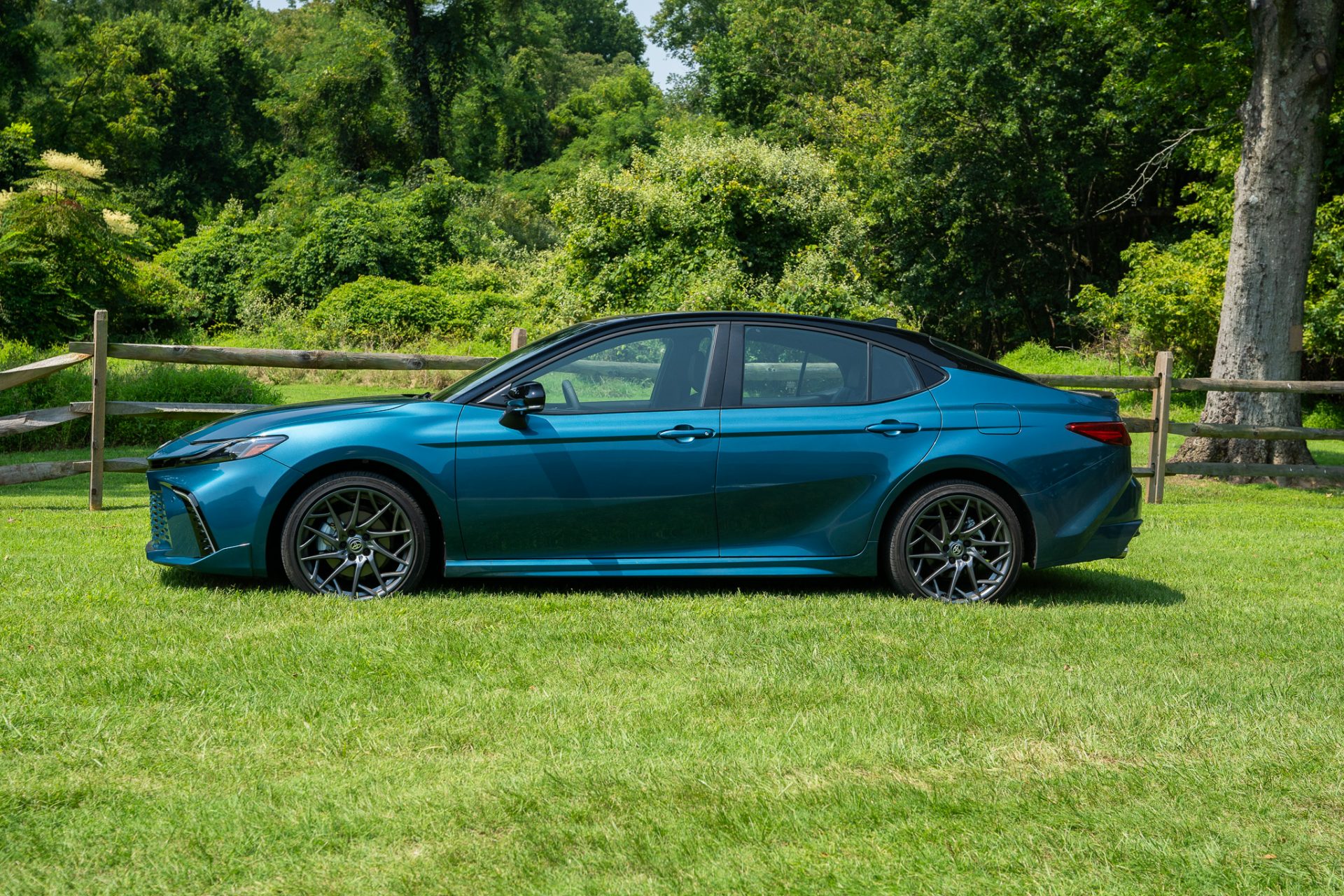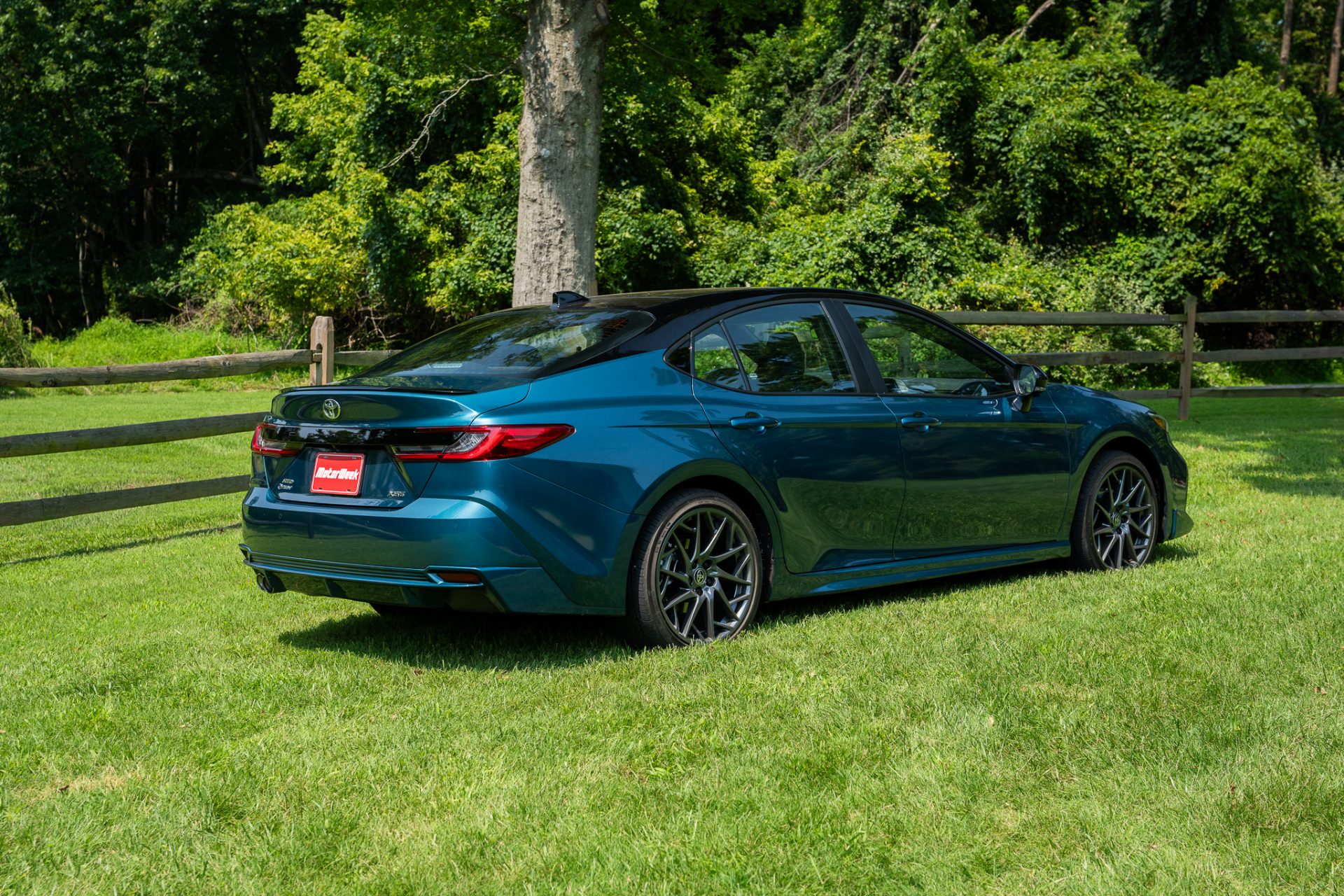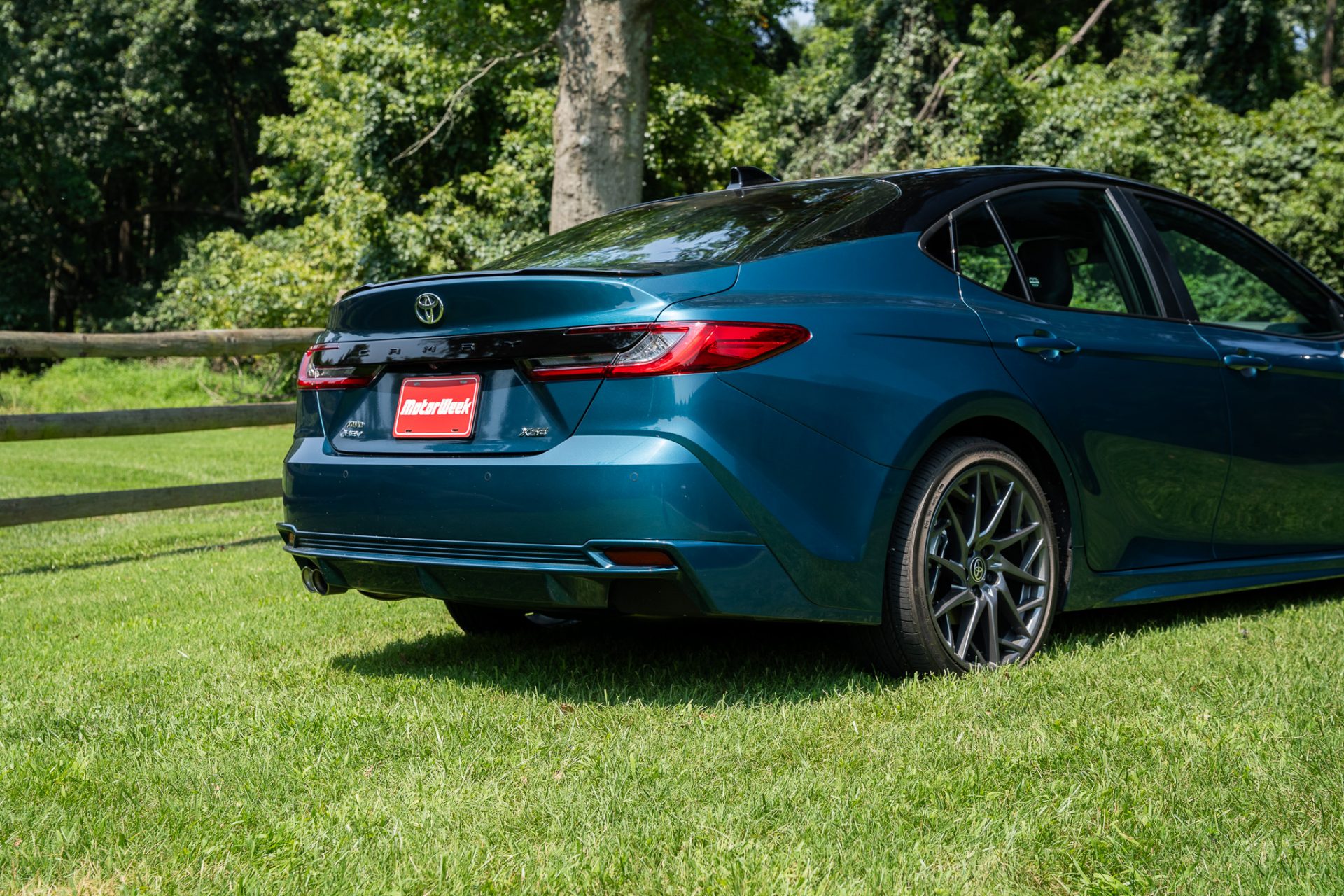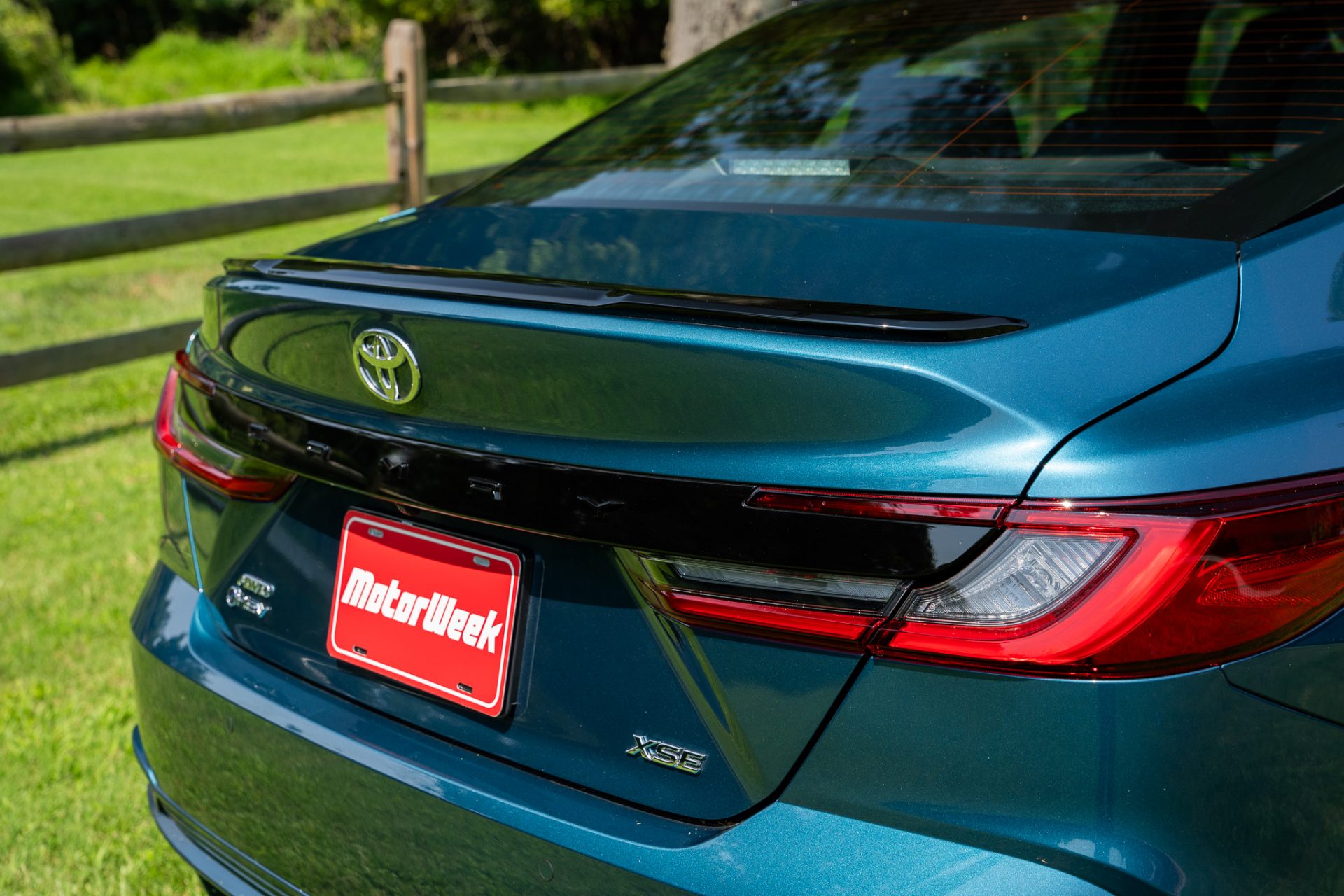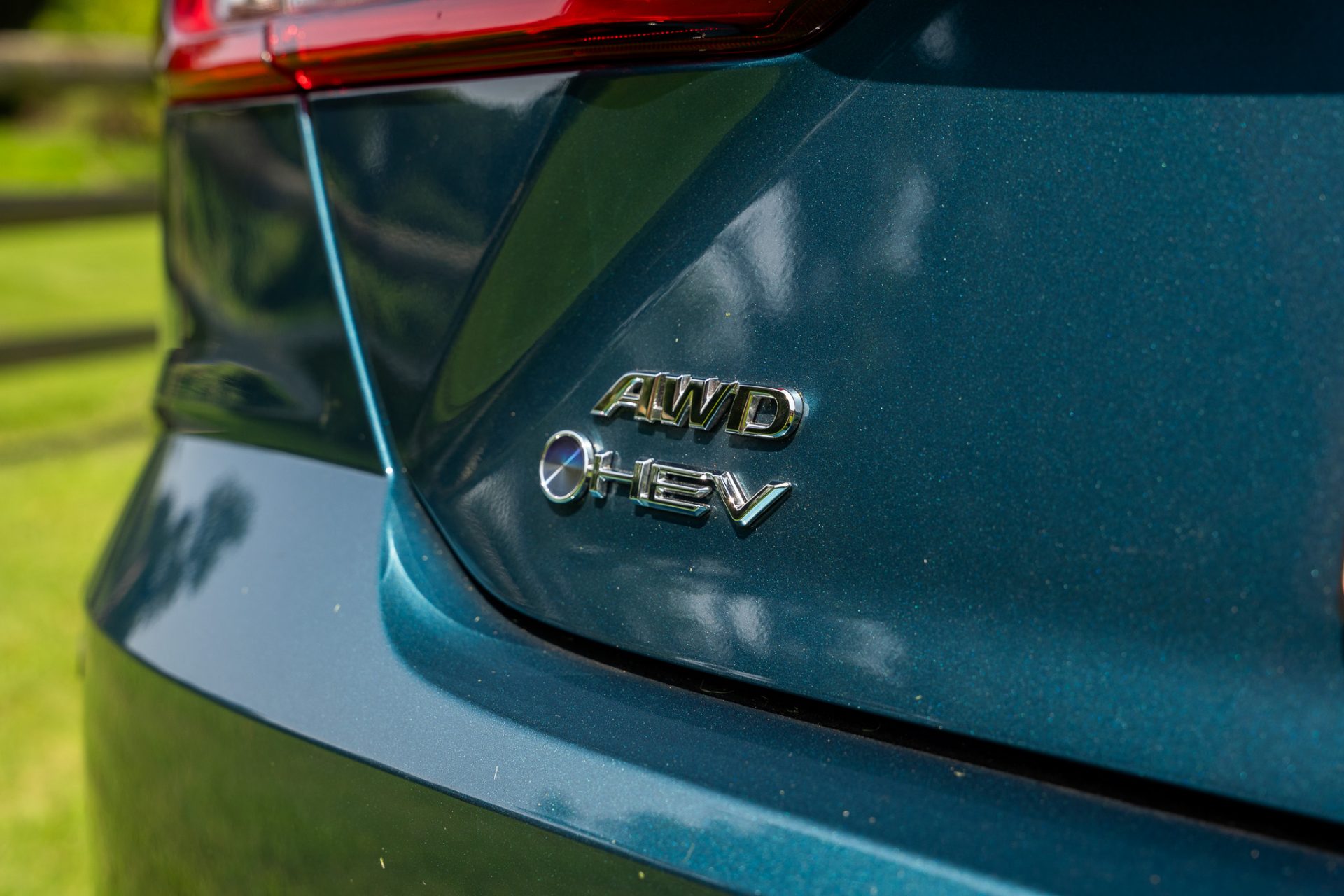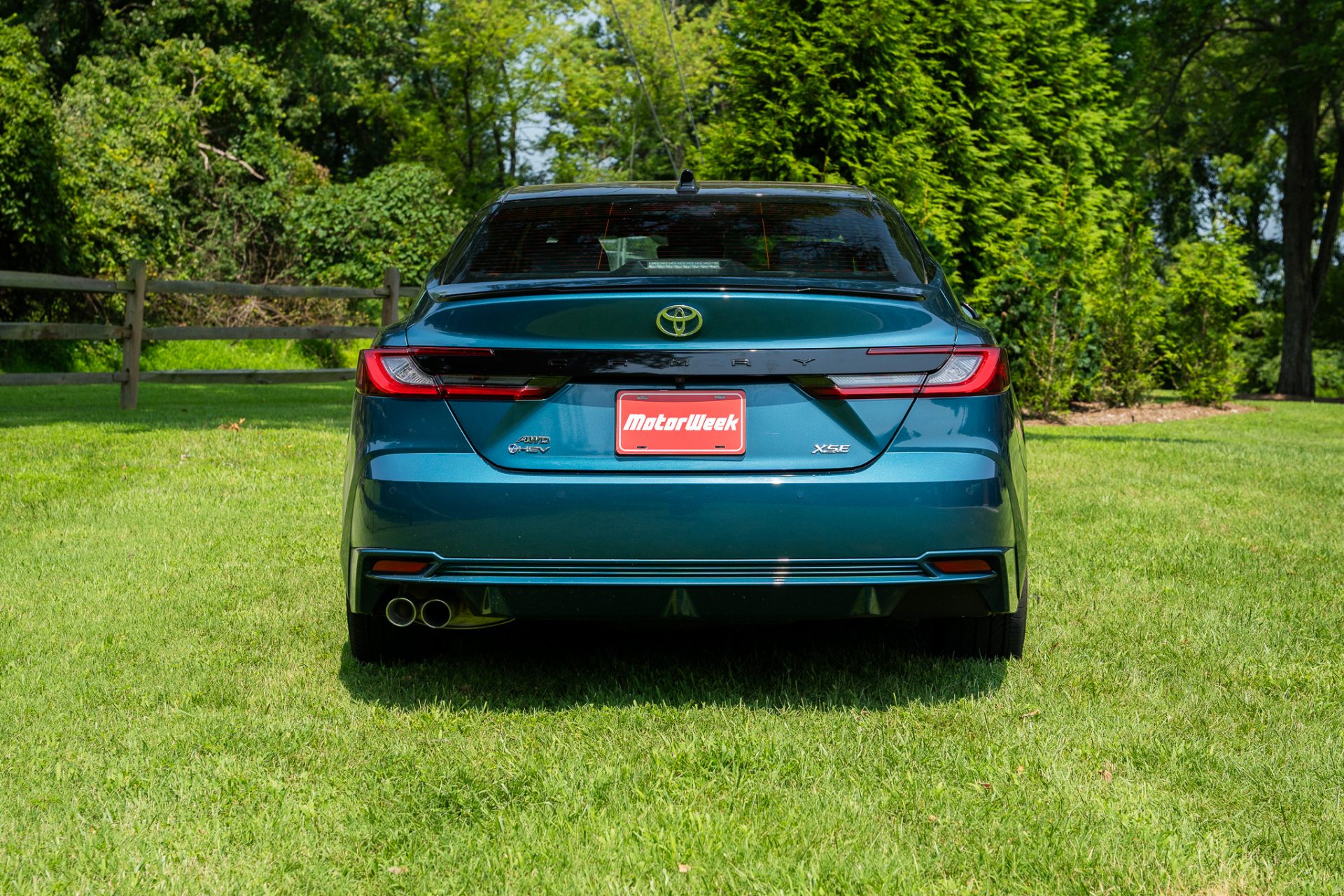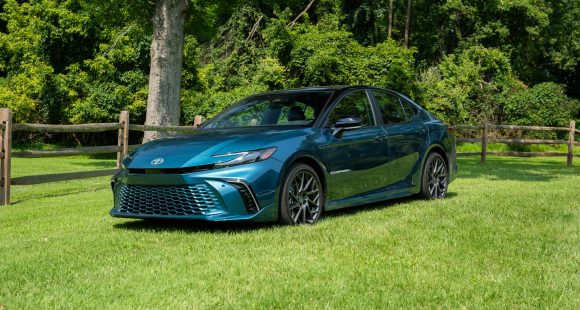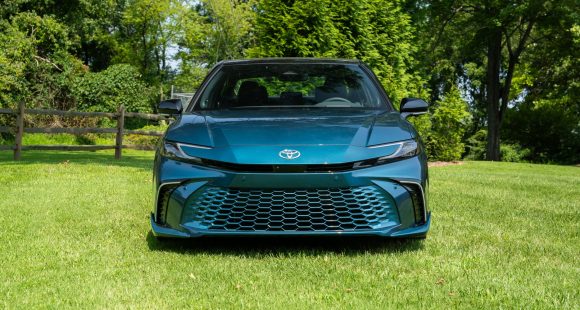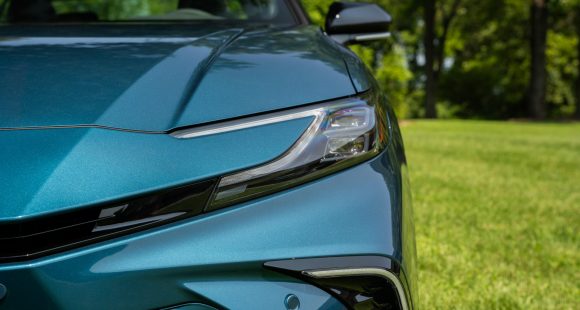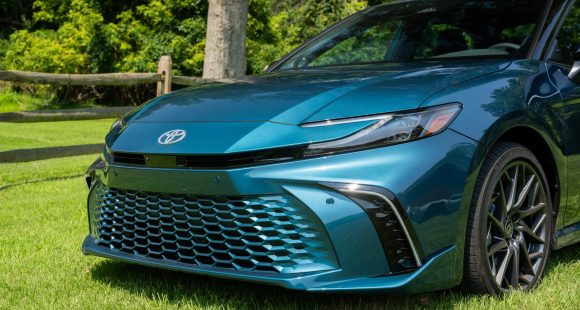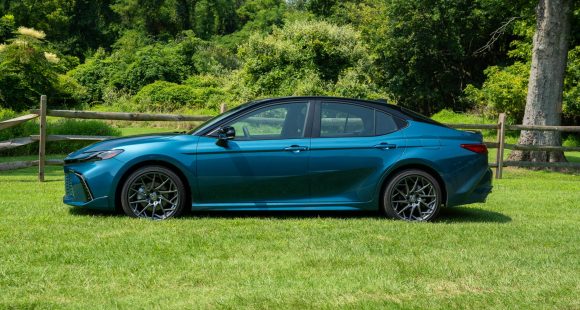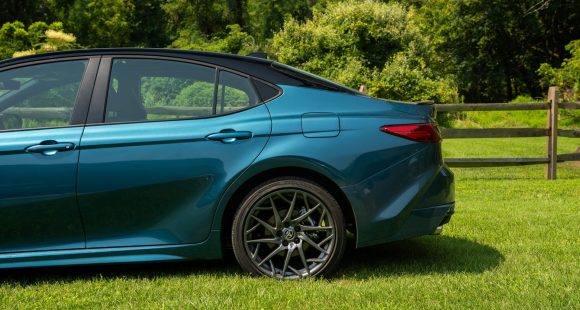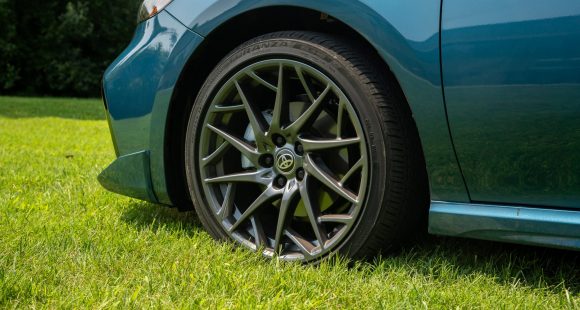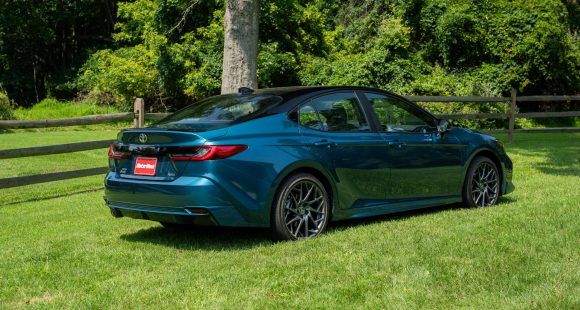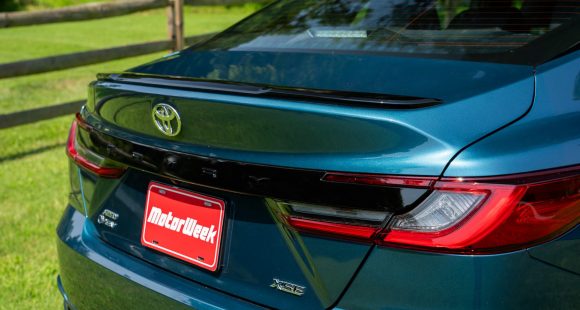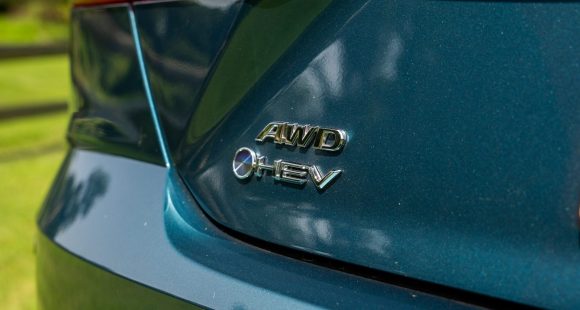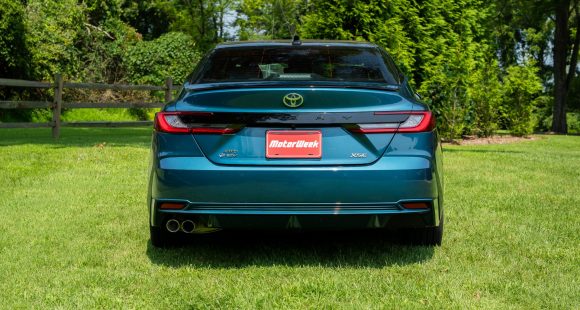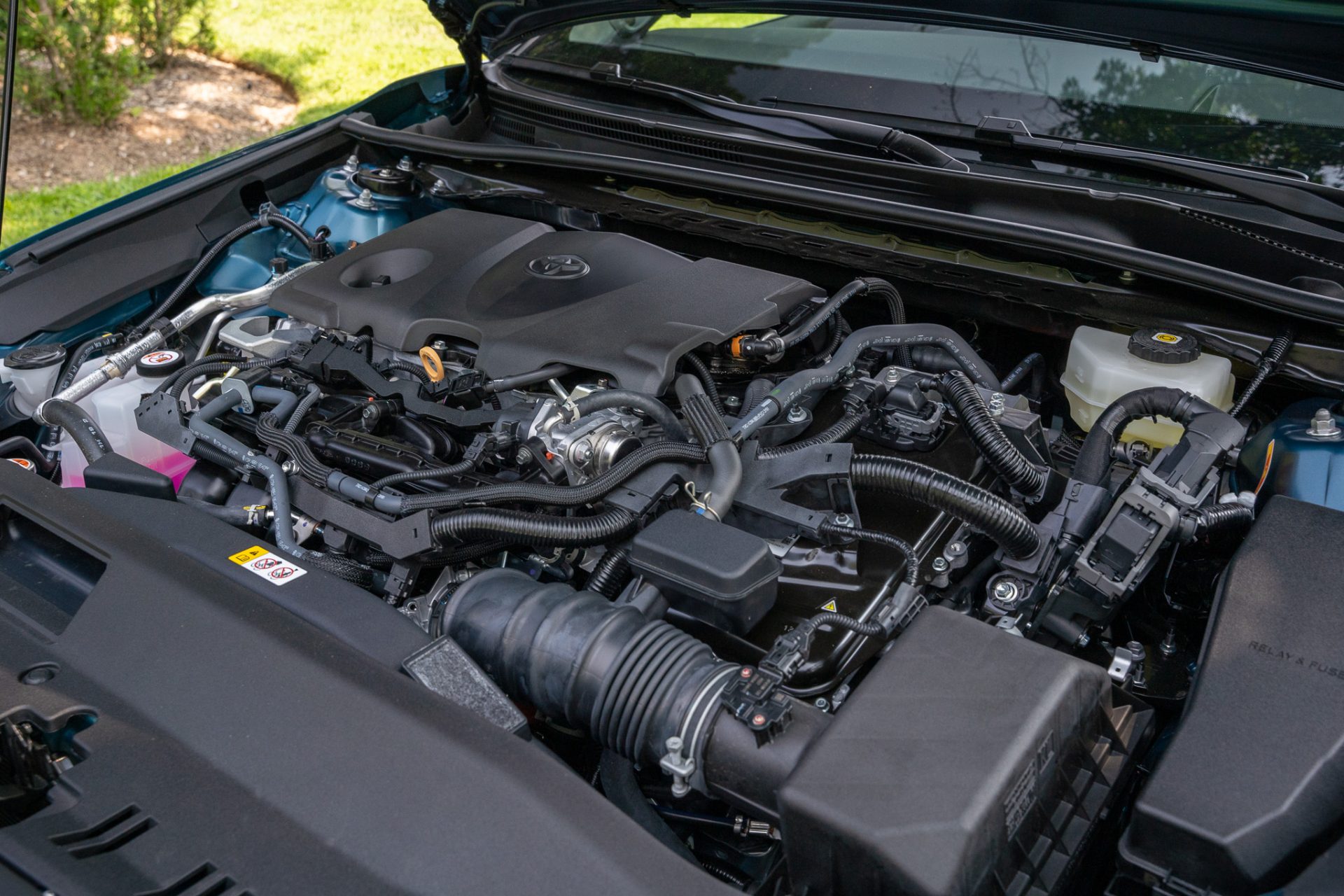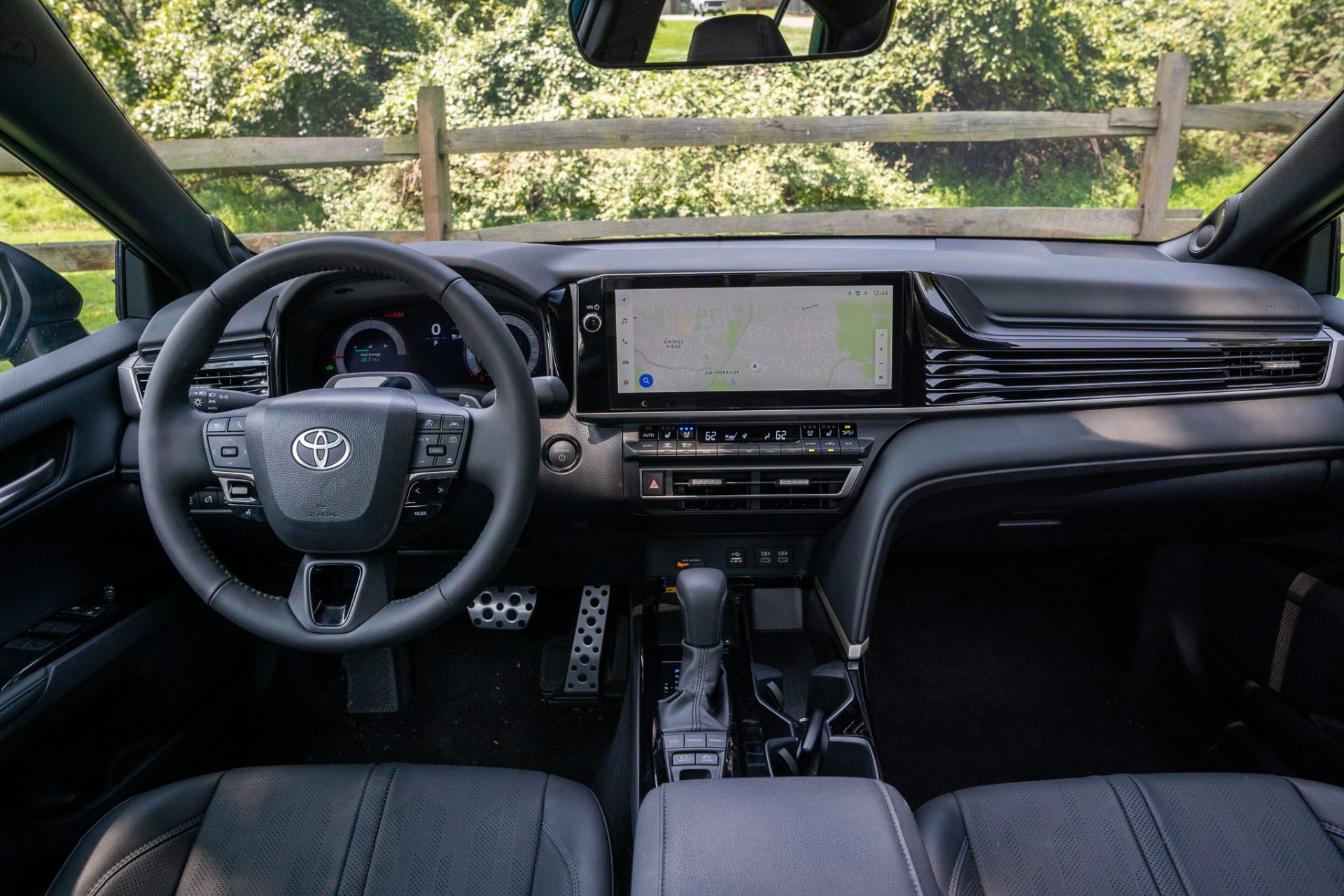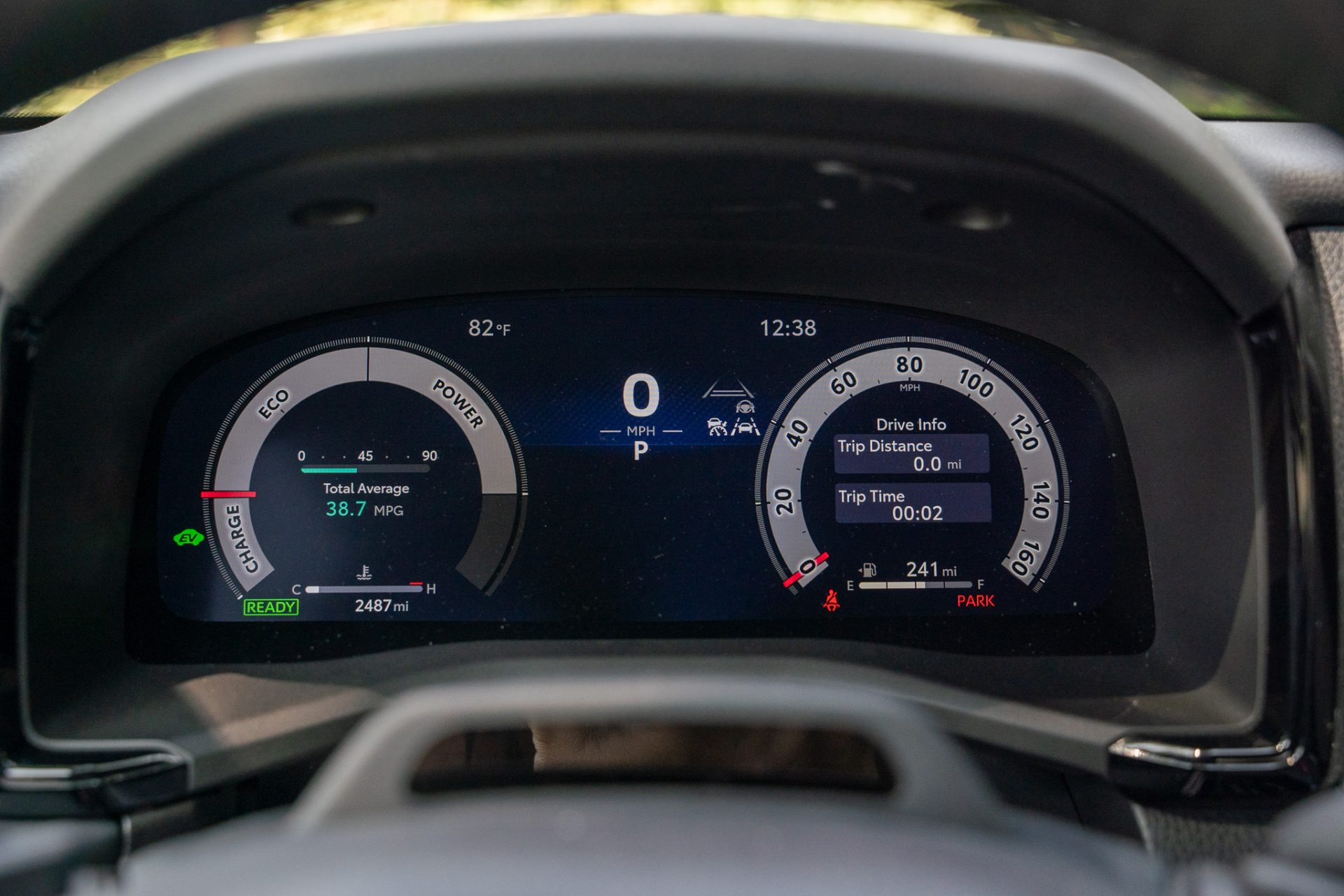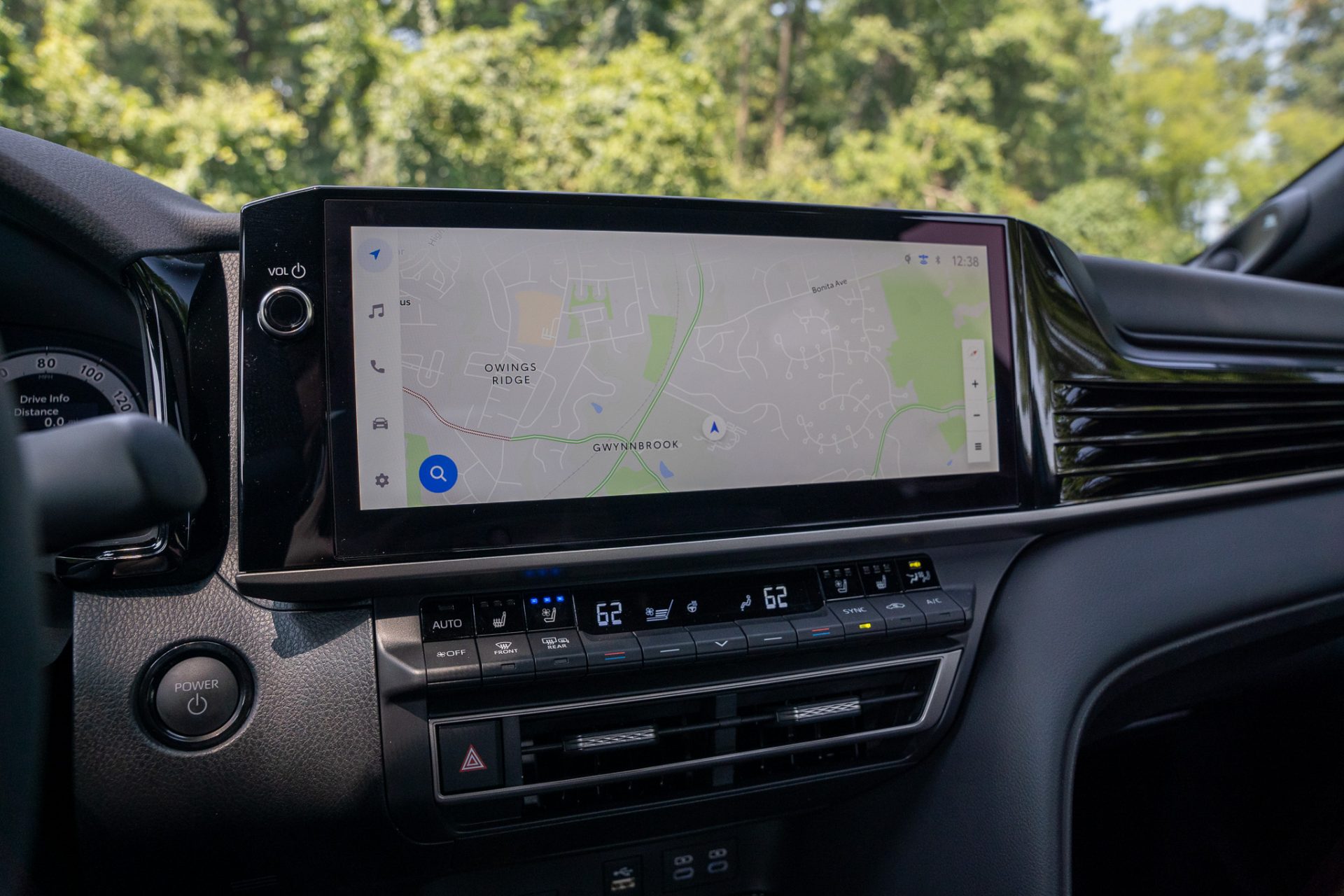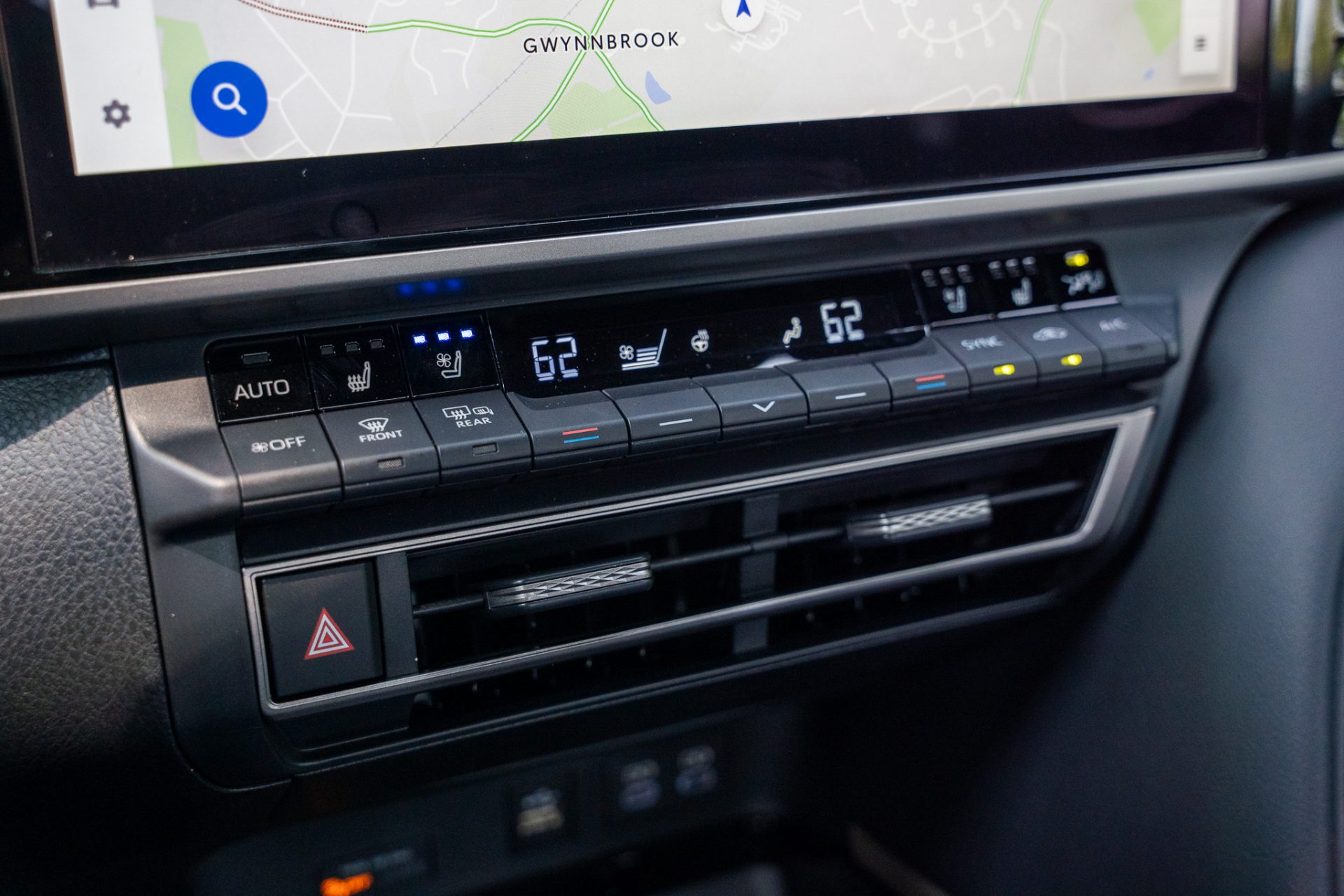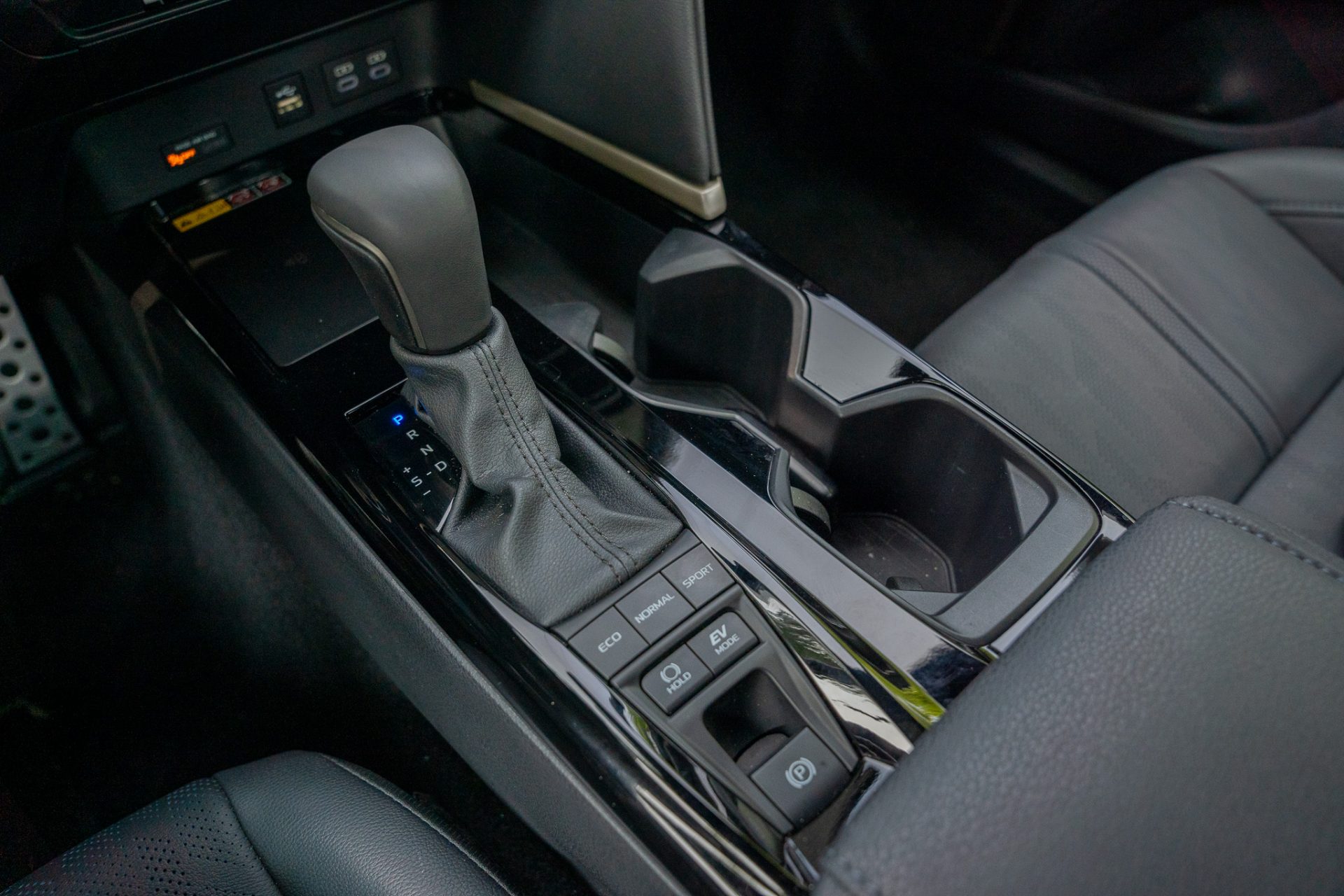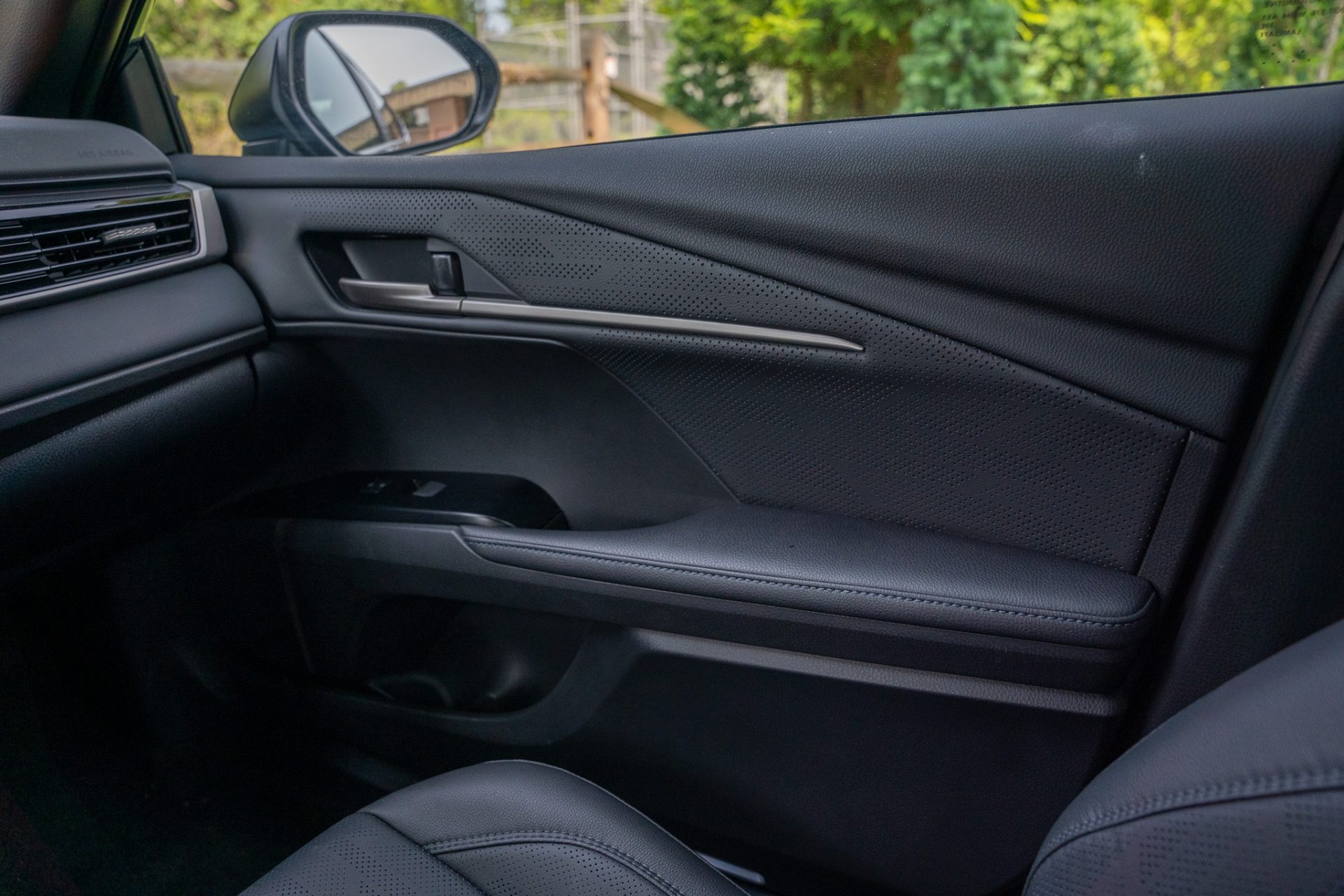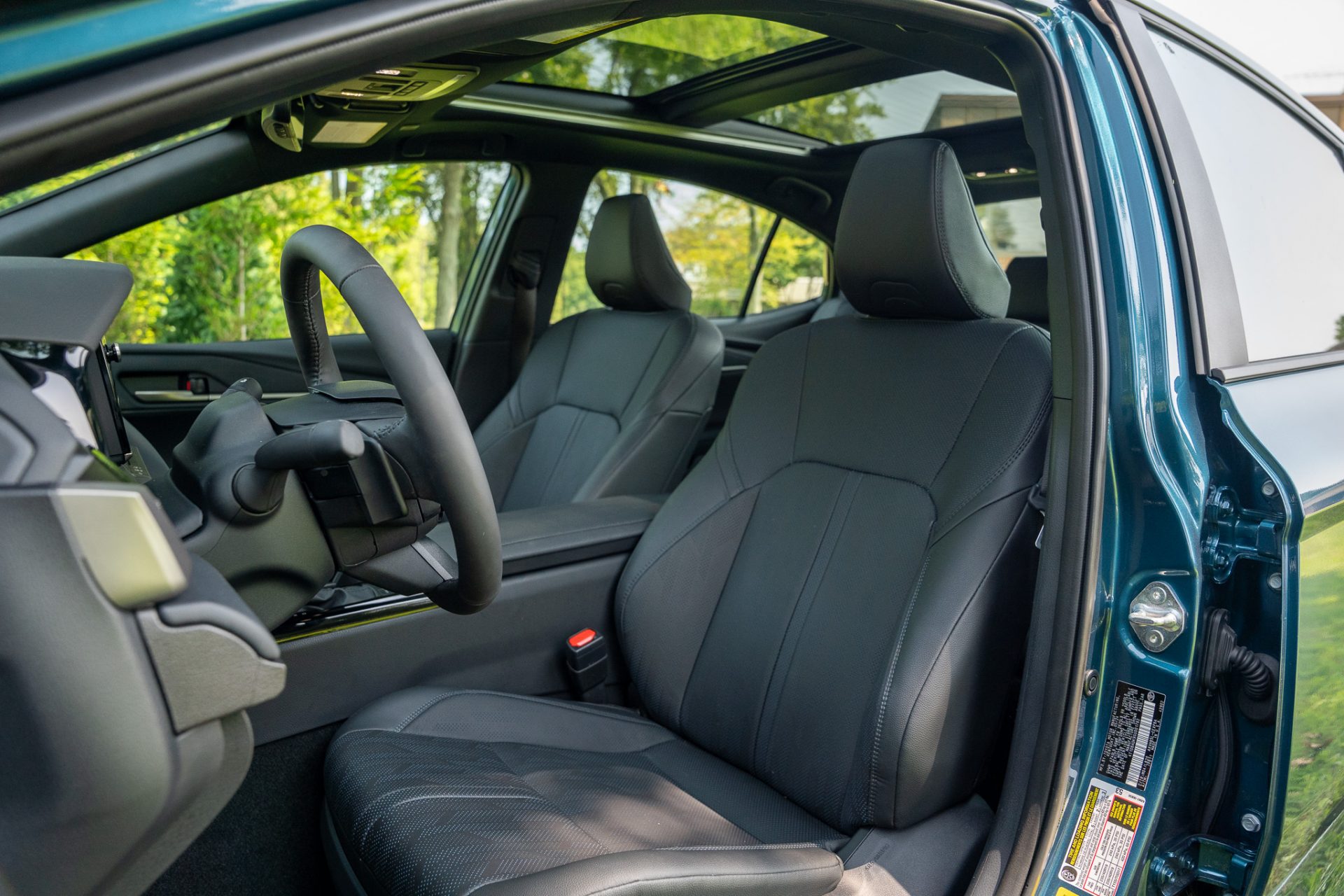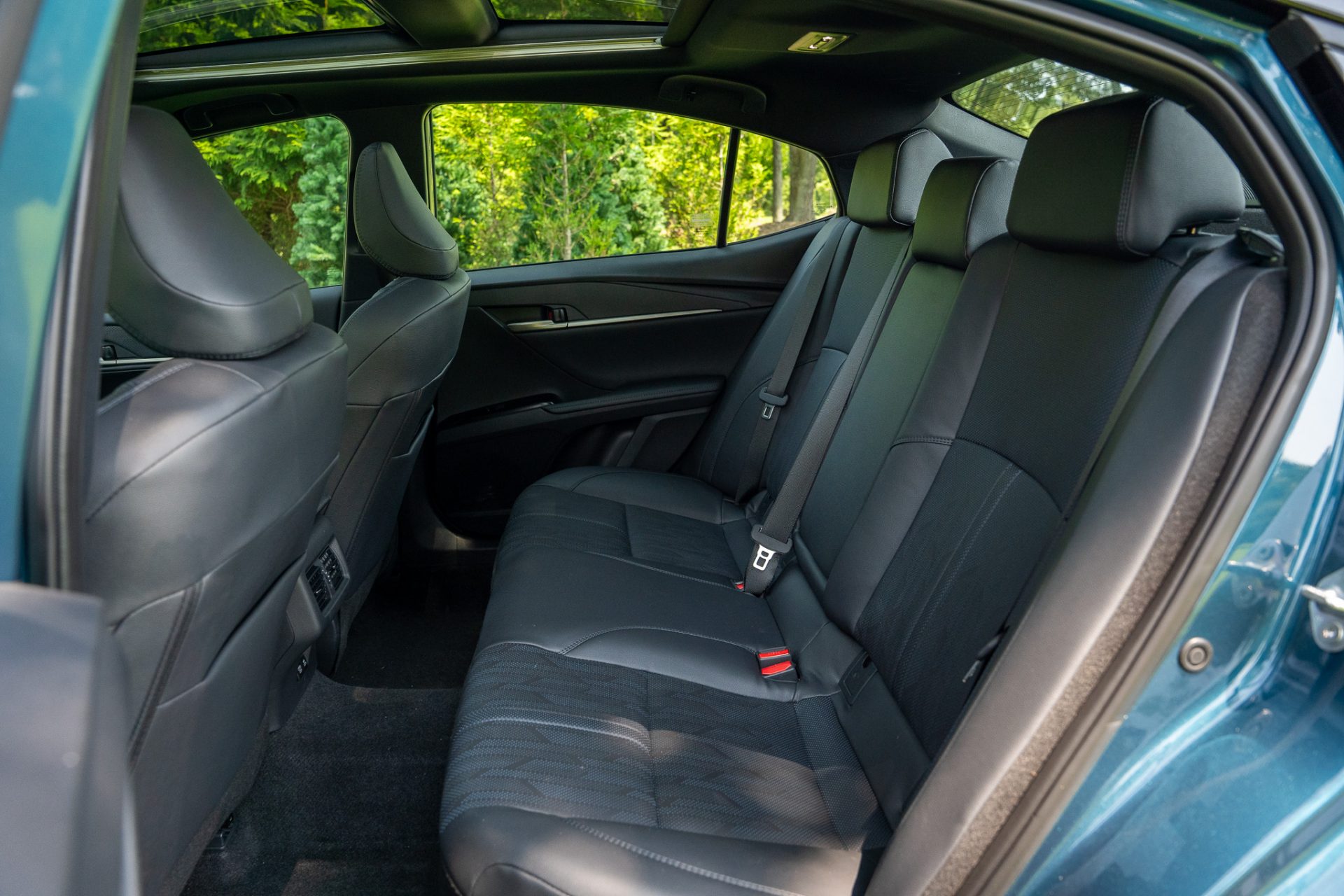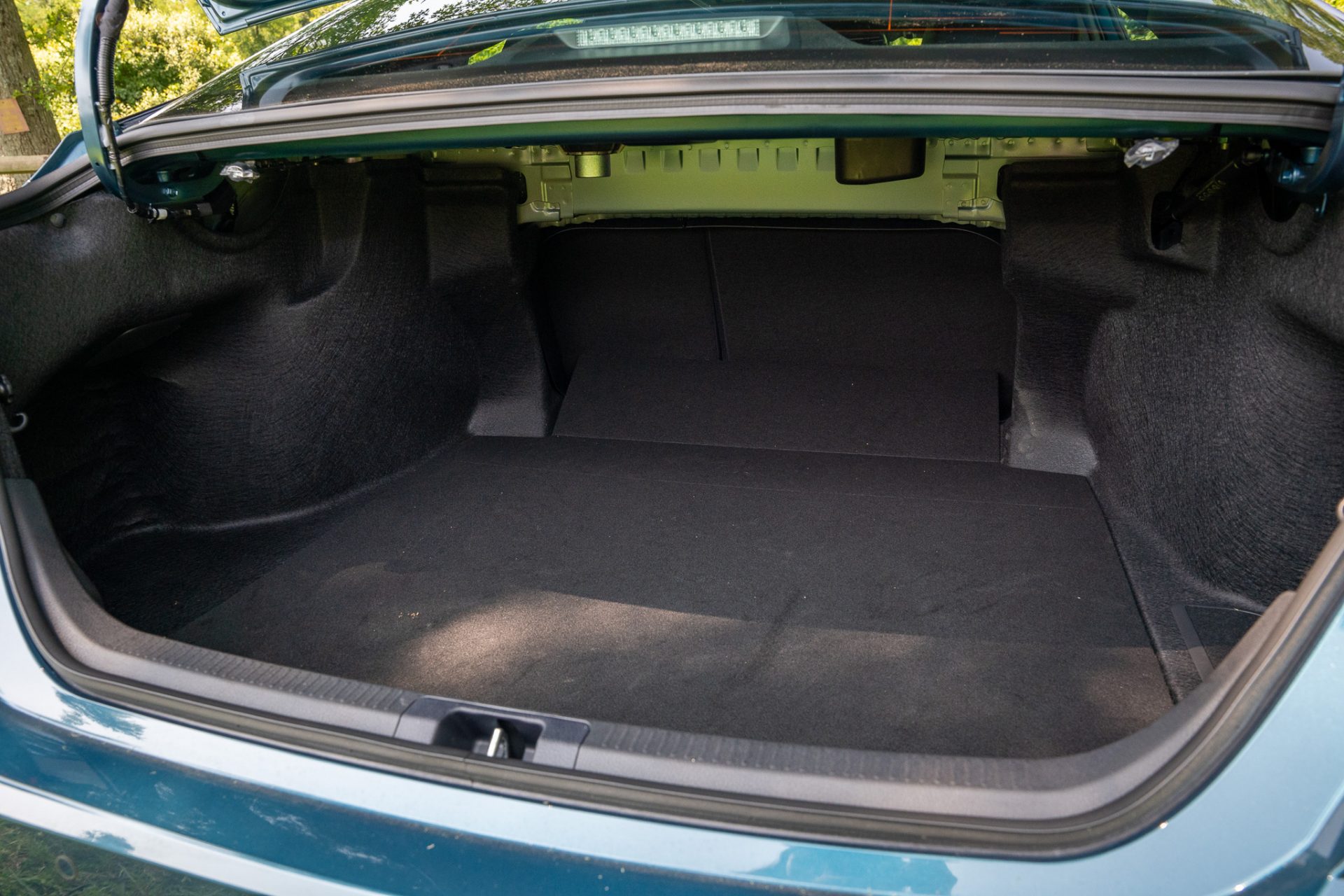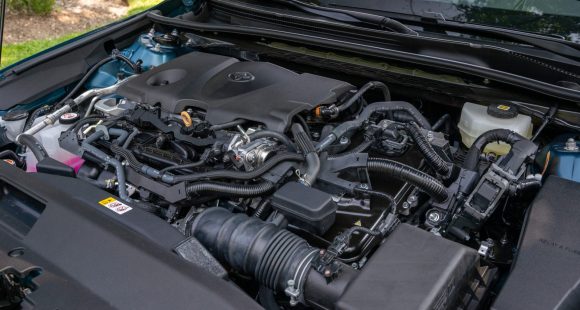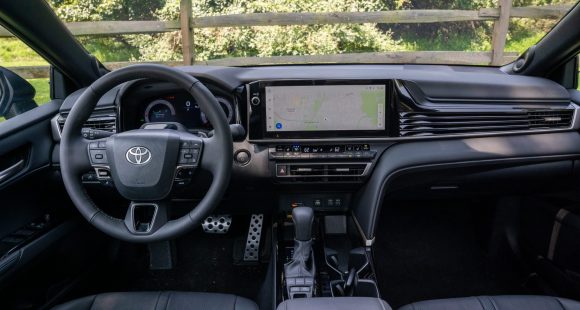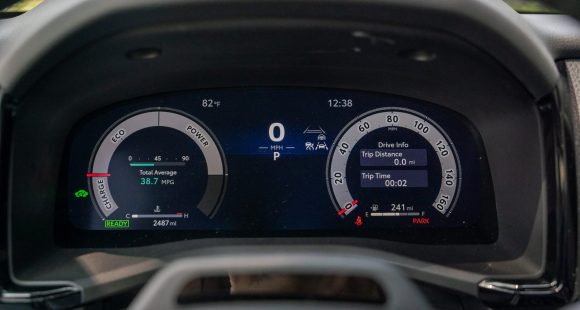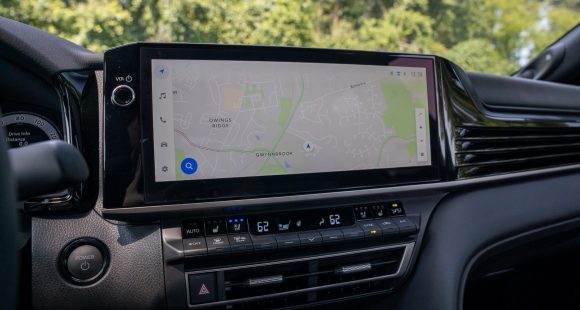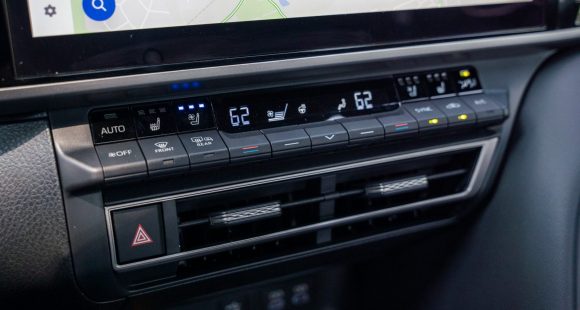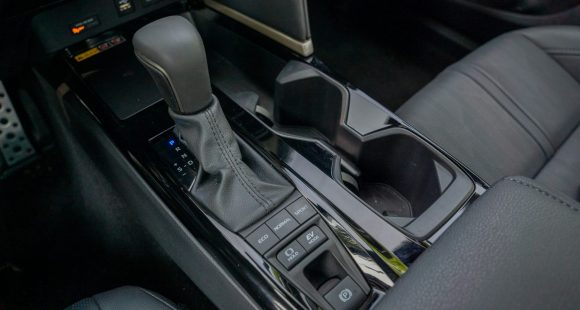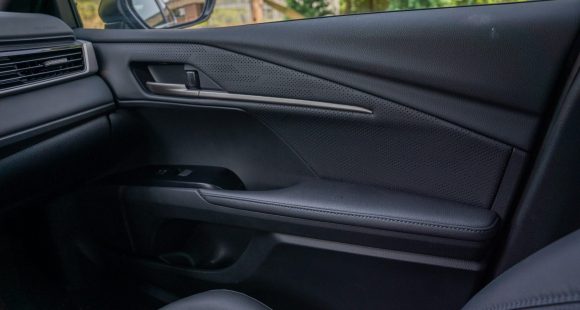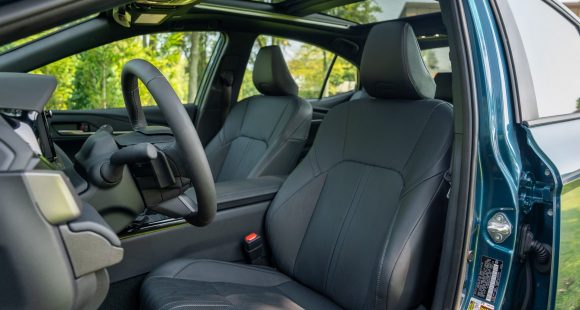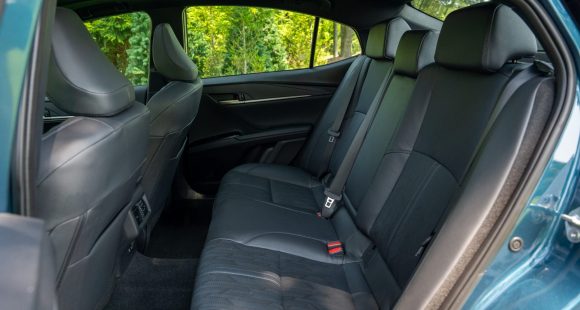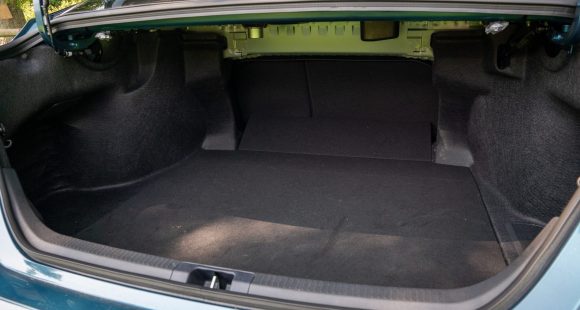2010 MazdaSpeed3
A few years back, Mazda nominated their capable Mazda3 Hatchback for the factory tuner game. They badged this sporty compact the MazdaSpeed3. The result was a killer combo of practical presence and unyielding performance. It was a true street racer at an affordable price. Well, now it’s take two for the MazdaSpeed3, as we wonder… what more can this little hot hatchback deliver?
The impression is immediate. Mazda’s 5-door 2010 MazdaSpeed3’s cartoonish presence makes the outgoing model look almost tame by comparison. And it’s the grill, with its leering mouthful of black plastic gills surrounded by swept-back cat-eye lighting that gets your attention and keeps it.
The most purposeful new front feature is a functional hood scoop that blasts the Speed3’s intercooler with fresh air. Rear styling is also more aggressive for 2010, with narrow, protruding taillights, more angular rear hatch, larger spoiler, and oversized dual exhaust tips. The RX-8 R3-inspired 18-inch alloy wheels are now shod with wider high-performance Dunlop tires.
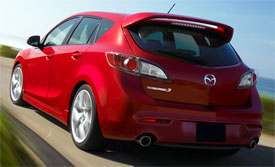 But powering this front-drive, grocery-getting outlaw is the same direct injected, 263-horsepower 2.3-liter turbo four as before. Likewise, torque remains at an ample 280 pound-feet, all channeled through the Speed3’s only transmission, a very appropriate six-speed manual.
But powering this front-drive, grocery-getting outlaw is the same direct injected, 263-horsepower 2.3-liter turbo four as before. Likewise, torque remains at an ample 280 pound-feet, all channeled through the Speed3’s only transmission, a very appropriate six-speed manual.
Gearing in second through fifth gears is taller for 2010, while a limited slip diff remains standard. Hard launches in the Speed3 still proved tricky, however. Too much throttle and the front wheels shudder; too little and it all bogs down. But making pavement connection has improved over our 2007 test, with the new tires, revised driveshafts and updated torque management electronics reducing torque steer in a big way.
In fact, our 0 to 60 time of 5.2 seconds is over a second quicker, with a similar improvement for the quarter mile at 13.9-seconds and 102 miles per hour. Short stops were never a problem with the Speed3: 60 to 0 in a fine average of 123 feet with a solid, vibration-free pedal. Plus, for 2010 Brake Assist has been added.
Through our long slalom, the MazdaSpeed3 again exhibited a more manageable amount of torque steer with less tendency to push at each apex. You still need to squeeze rather than stab the throttle for best control; but manage the gas well, and this little hatch rewards you with pure exhilaration.
We did notice that during the high speed lane change, the electro-hydraulic steering seemed to lose boost, going from light to very heavy in an instant. The previous generation Speed3 had a stiff ride, especially on rough roads. The new Speed’s strengthened body structure and suspension tweaks; stiffer springs, higher damper rates, and revised front stabilizer bar still leave most of the shock absorption to the comfy, high-bolstered seats.
They’re mostly black cloth, but the headrests and bolsters are trimmed in black leather and there are red highlights everywhere around the cabin.
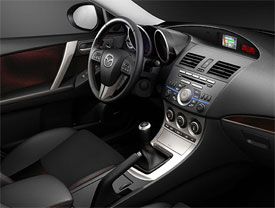 The dash has a new-found flow, drawing the eye down the center stack to the brightwork around the shifter. The switchgear layout has been revised, and the digital display has moved to a shroud under the windshield.
The dash has a new-found flow, drawing the eye down the center stack to the brightwork around the shifter. The switchgear layout has been revised, and the digital display has moved to a shroud under the windshield.
Door sills, floor mats, and aluminum pedals are all unique to the MazdaSpeed3. A new LED turbo boost gauge between the tach and speedo is standard, as is Bluetooth and six airbags.
With our car’s Tech package, there’s also a 10-speaker Bose sound system, full-color navigation, and push-button start.
The back bench offers a reasonable amount of room for two adults, but not for three. But it’s impressively versatile. With the 60/40 seats up, there’s 17 cubic feet reserved for cargo. Folded flat, that figure swells to a useful 42.8 cubic feet.
Government Fuel Economy Ratings for the 2010 MazdaSpeed3 are 18 city/25 highway. On our mileage loop, we bettered both, managing 26.1 miles per gallon of premium. With an Energy Impact Score of 16.3 annual barrels of oil, and a Carbon Footprint of 8.7 tons of CO2, the MazdaSpeed3 falls right in line with the Subaru WRX.
As ever, the 2010 Mazda MazdaSpeed3 is priced to move, with a base of just $23,945. The Tech package adds $1,895 more. Mazda’s frisky MazdaSpeed3 continues as one of our all time favorites. For 2010, in some ways - more refined, in others - more ferocious, but always entertaining. And, we might add, for a factory tuned hot hatchback, extremely affordable and even practical. Buy one and you’ll be grinning like a Cheshire cat, too!
Specifications
- Engine: 2.3-Liter Turbo Four
- Horsepower: 263
- Torque: 280 Lb Feet
- 0-60 MPH: 5.2 Seconds
- 1/4 Mile: 13.9 Seconds @ 102 MPH
- 60-0 MPH: 123 Feet
- EPA: 18 MPG City/ 25 MPG Highway
- Mixed Loop: 26.1 MPG
- Energy Impact: 16.3 Barrels Oil/Yr
- CO2 Emissions: 8.7 Tons/Yr
2025 Toyota Camry
Camry Goes All Hybrid, But It’s No Prius Sedan
Whether you call it Camry or Cam-ray, you have to call this Toyota the best-selling sedan in the U.S. for 2023. Not bad for a car in the last year of its lifecycle. That’s right, the Camry is all-new for model year 2025. So, let’s find out if this ninth-generation Camry can stay truly competitive in this world of SUVs and crossovers.
There have been many variations of the Toyota Camry over the last 40 years; some more exciting than others, but all have been incredibly comfortable, efficient, and practical. That theme carries over for the all-new 2025 Toyota Camry.
Though it feels like they purposely avoided any type of “wow” factor inside. Sure, there are the expected big screens for multimedia and gauge display, but they kept them separated, keeping the overall vibe traditional and classy rather than flashy. They’ve also retained lots of physical controls, added some unique materials, and attempted to open up the space a bit, knowing that they’re going up against EVs these days too, not just usual family sedan nameplates.
The new Camry follows Toyota protocol of basic LE series and more sport-oriented SE series; adding an X in front of either adds a bit more content. For our XSE tester that mostly means a flashier exterior that includes black trim and rear spoiler, dual exhaust tips, and 19-inch wheels, but it also gets a sport-tuned suspension.
Following the pattern of many recent Toyotas, Camry now has an all-hybrid lineup. Toyota’s newest, fifth-generation hybrid system mates to a 2.5-liter I4 engine for the first time. It works with two electric motors for a 225-horsepower output, 17 more than the outgoing Camry hybrid. And it delivers up to 51 mpg Combined. All-wheel-drive versions add an additional electric motor in back for powering the rear wheels for an increased total output of 232 horsepower; and AWD is available for all trims.
This is easily the best handling Camry we’ve driven.
Our all-wheel-drive tester did feel quite peppy on the street, with a competent suspension that soaked up bumps easily without feeling soft or floaty. At the test track, there was great grip off the line, and a substantial punch of power to get us to 60 in 6.9 seconds. There was a nice little engine growl at takeoff too, but it quickly turned into a consistent droning noise due to the electronically controlled CVT trans. There are some simulated gears you can play with, but they don’t really add much to the performance; our best quarter-mile time was 15.2 seconds at 94 mph.
This is one case where “sport-tuned suspension” seems to really mean something, as this is easily the best handling Camry we’ve driven. Minimal body roll, great road feel, and steering that was both tight and responsive. All-wheel-drive grip was great through the cones, but most people will find it much more beneficial when driving on slippery roads.
The hybrid’s regen braking is not the most natural feeling, but in panic stops the brakes clamp down quickly, causing some aggressive nosedive, but ultimately resulting in very short, 110-foot stops from 60.
As mentioned earlier, Government Fuel Economy Ratings are as high as 51 Combined, but all-wheel-drive XSEs come in at 44 City, 43 Highway, and 44 Combined, though our lead foot test loop saw just, but still noteworthy, 42.6 mpg of Regular.
Pricing starts with the base LE at $29,535; all-wheel drive is another $1,525 if you want it. XSE tops out the range at $35,735.
While the midsize four-door sedan is not the suburban staple that it once was, the Camry absolutely remains a staple of the Toyota lineup, and even kept its status as America’s best-selling car last year. So, it looks like there’s no stopping the Camry, as the more efficient 2025 Toyota Camry is better-looking, has better performance, and is a better all-around family car than ever.
Specifications
As Tested
- Engine: 2.5-liter I4
- Transmission: e-CVT
- Horsepower: 232
- EPA: 44 City | 43 Highway | 44 Combined
- 0-60 mph: 6.9 seconds
- 1/4 Mile: 15.2 seconds at 94 mph
- Braking, 60-0 (avg): 110 feet
- MW Fuel Economy: 42.6 mpg (Regular)







